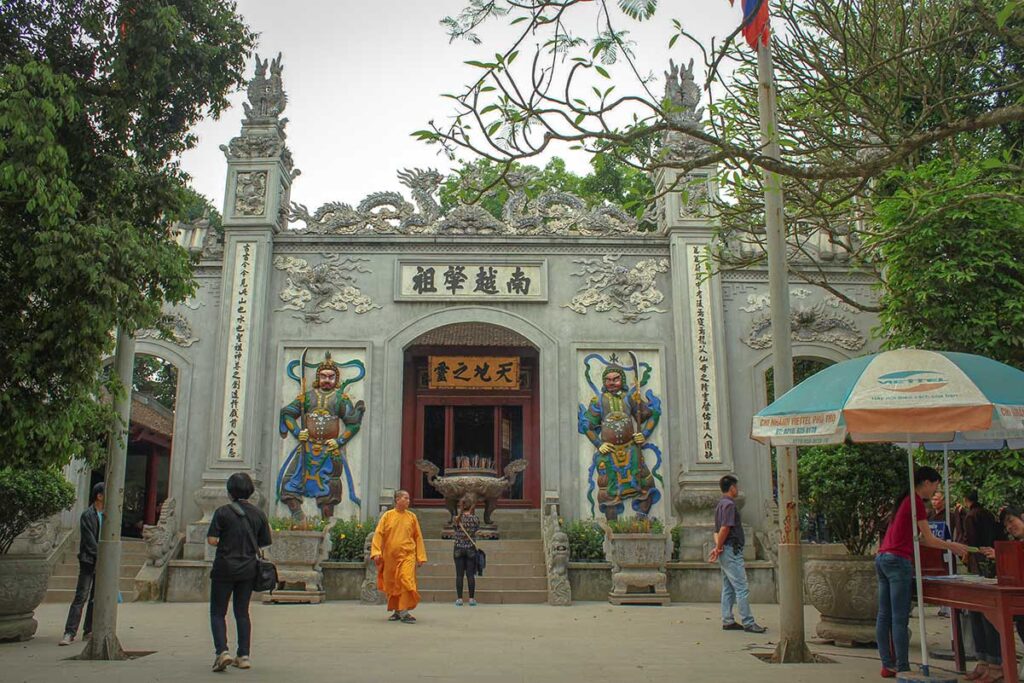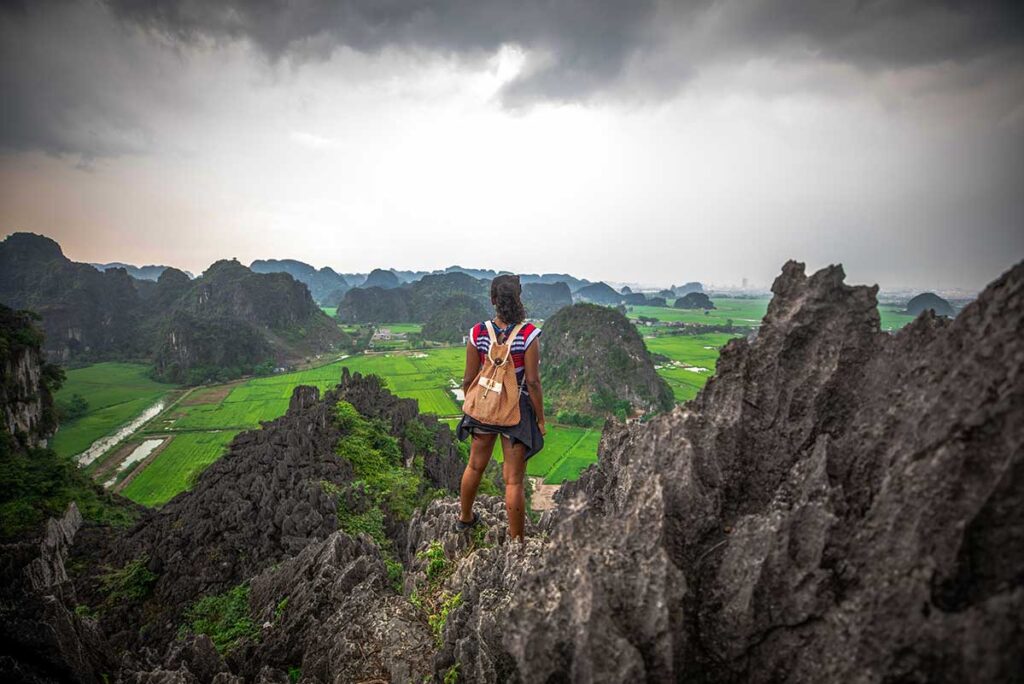Who were the Hung Kings?
The Hung Kings are considered the legendary ancestors and first rulers of Vietnam, believed to have established the ancient kingdom of Văn Lang more than 2,000 years ago. According to myth, the dragon lord Lạc Long Quân and the mountain fairy Âu Cơ gave birth to 100 sons—symbolizing the unity of the Vietnamese people—of which the eldest became the first Hung King. Their legacy is not only historical but spiritual, deeply rooted in Vietnamese culture and national pride; this explains why temples were built in their honor and why they remain central figures in ancestral worship across the country.
History of the Hung Kings Temple Complex
The Hung Kings Temple Complex was originally built during the 10th century AD on Nghia Linh Mountain, near what was once the ancient capital of Phong Châu—the heart of the Văn Lang kingdom. Over the centuries, successive Vietnamese dynasties preserved and expanded the site, turning it into a national place of worship for the 18 Hung Kings who symbolize the origin of the Vietnamese people.
Throughout history, the complex has remained a powerful cultural symbol, used to promote unity, patriotism, and ancestral reverence—especially during times of national struggle or renewal. In 2012, the worship of the Hung Kings was officially recognized by UNESCO as an Intangible Cultural Heritage of Humanity, affirming its enduring role in Vietnamese spiritual life.
Highlights of visiting the Hung Kings Temple Complex today
Set on a forested hillside in Phu Tho Province, the Hung Kings Temple Complex is a peaceful place with a strong spiritual atmosphere, especially for Vietnamese visitors. The site consists of several temples spread across Nghia Linh Mountain, connected by hundreds of stone steps and shaded by old-growth trees. While the architecture is relatively modest, each temple has deep symbolic meaning tied to Vietnam’s earliest legends and myths.
1. Main Gate (Cong Tam Quan)
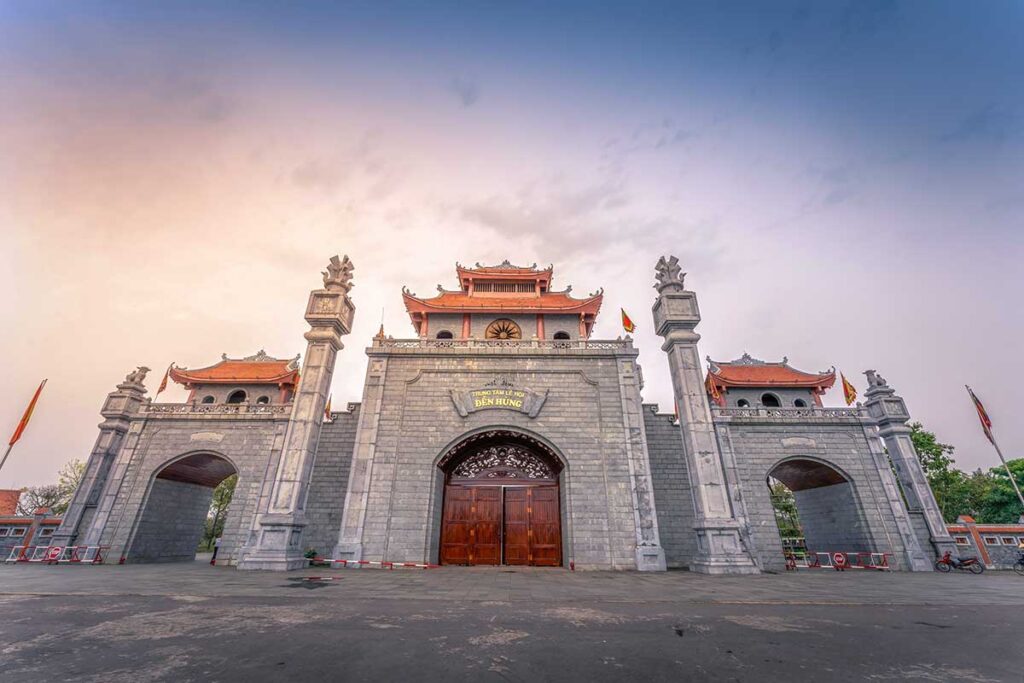
Built in 1917 during Khải Định’s reign, this impressive stone gateway stands about 8.5 m tall, with two tiers and eight overhanging tiled roofs. Its three-arched structure is adorned with dragons, lion-like creatures, and reliefs of soldiers holding weapons—symbols of strength and protection. Rather than a modern addition, it’s a historic entry point that sets a solemn tone for the rest of your walk up the mountain.
2. Ha Temple (Lower Temple)
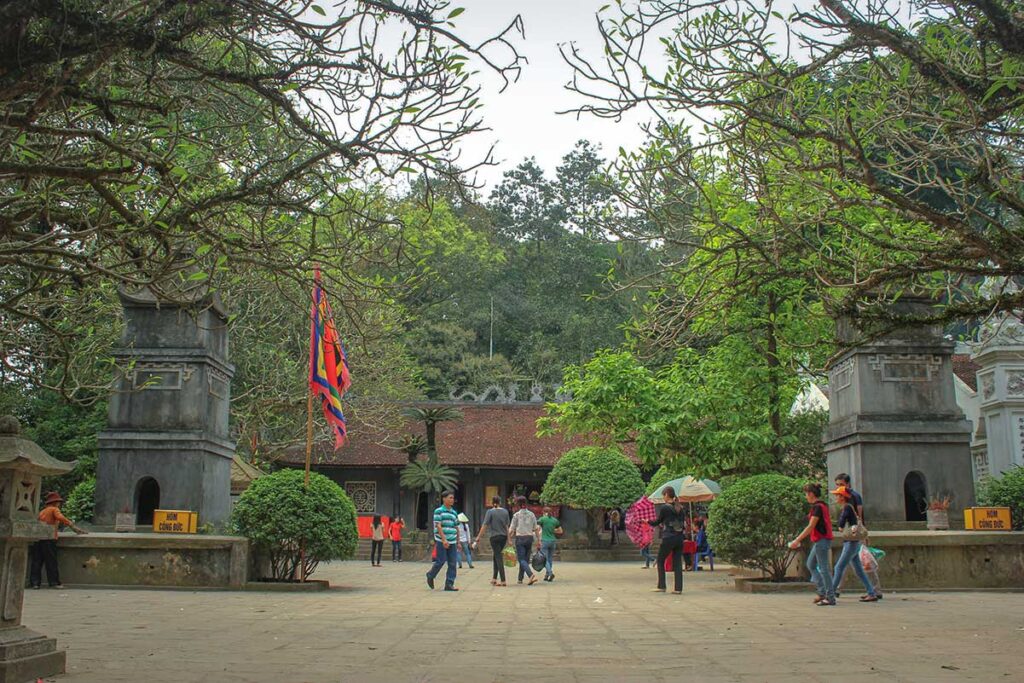
Located near the base of the mountain, Ha Temple is usually the first stop for visitors. It’s dedicated to all 18 Hung Kings and closely tied to the myth of Mother Âu Cơ, who gave birth to 100 children—marking the legendary beginning of the Vietnamese people. The temple has three altars and is often visited first during ceremonial worship.
3. Trung Temple (Middle Temple)
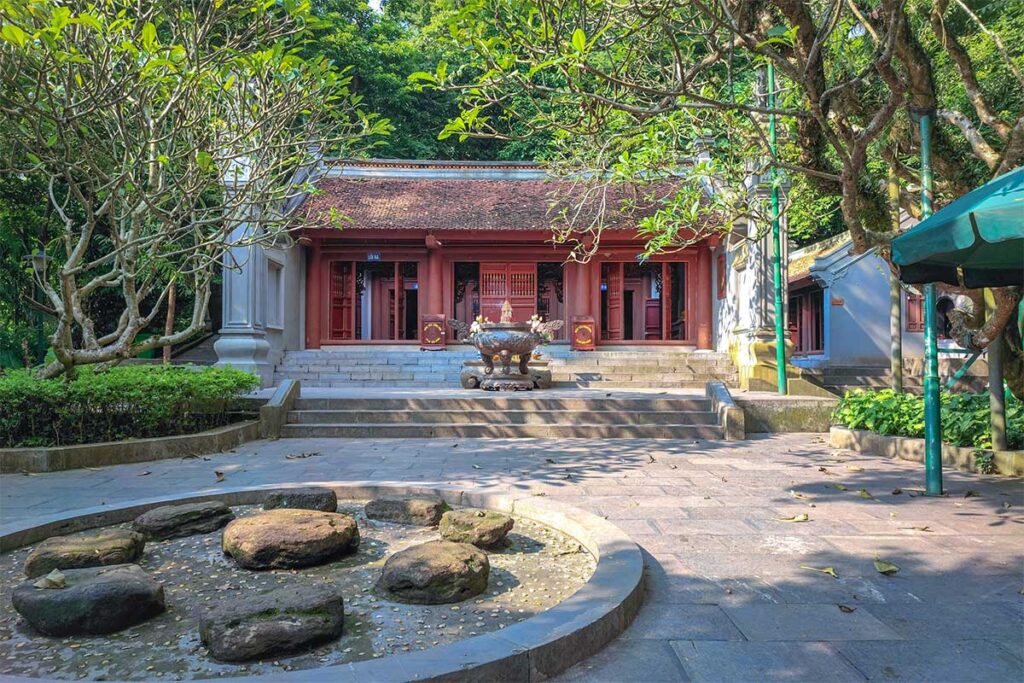
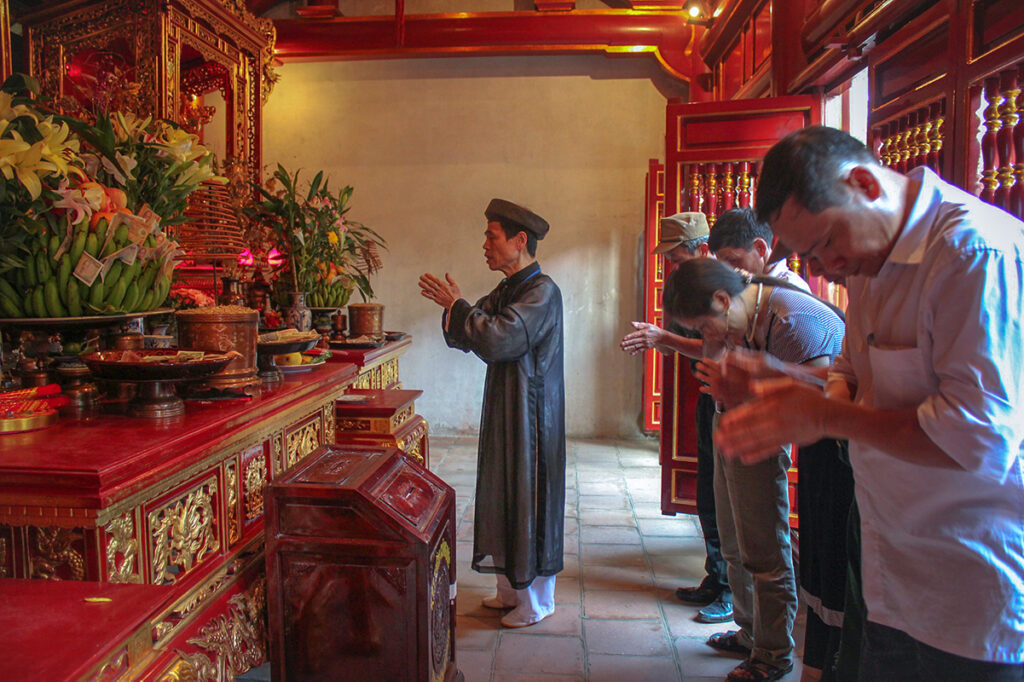
After climbing more than 150 steps, you’ll reach Trung Temple, located midway up the mountain. According to legend, this is where the 6th Hung King hosted a contest to find a worthy successor. His youngest son, Lang Liêu, won by presenting the symbolic Banh Chung (square cake) and Banh Day (round cake), representing the Earth and Sky. The story remains one of Vietnam’s most well-known legends.
4. Thuong Temple (Upper Temple)
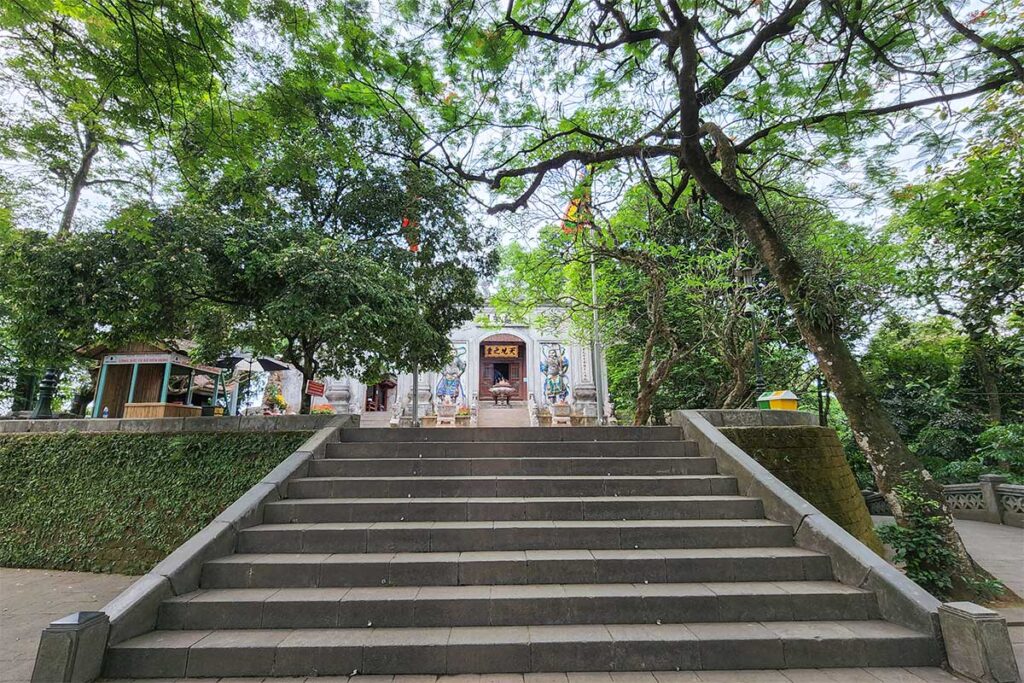
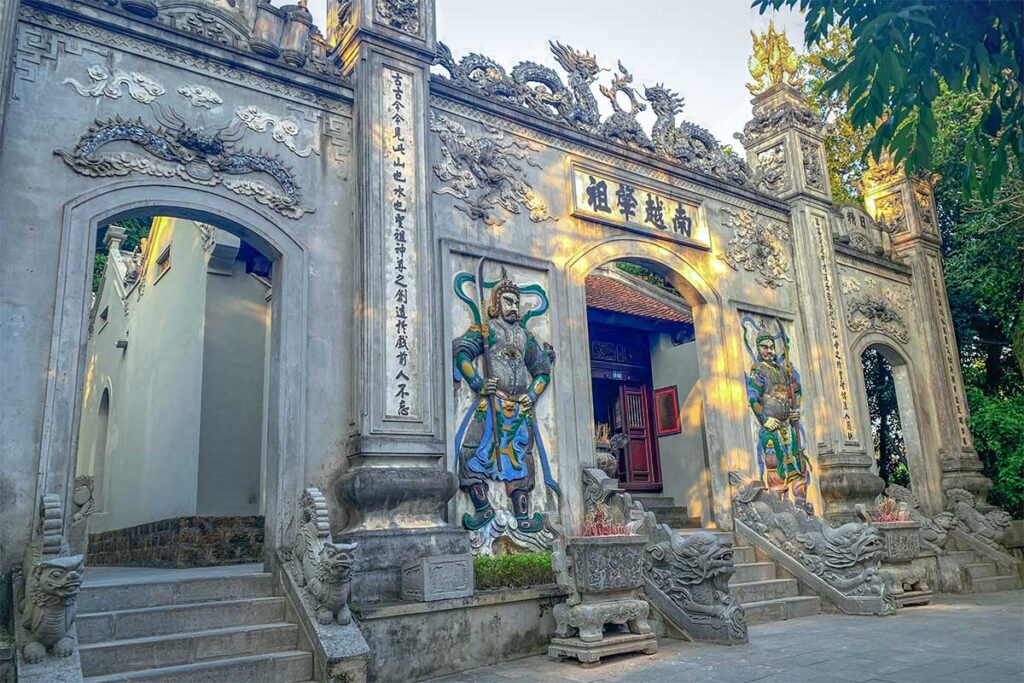
At the top of Nghia Linh Mountain lies Thuong Temple, the highest and most sacred site in the complex. This is where the Hung Kings are believed to have worshipped Heaven and the Rice God, praying for good harvests and national well-being. It’s also the main ceremonial location during the Hung Kings Festival. The climb is steep and can be tiring, but the forested summit and quiet atmosphere offer a rewarding sense of serenity.
5. Gieng Temple (Well Temple)
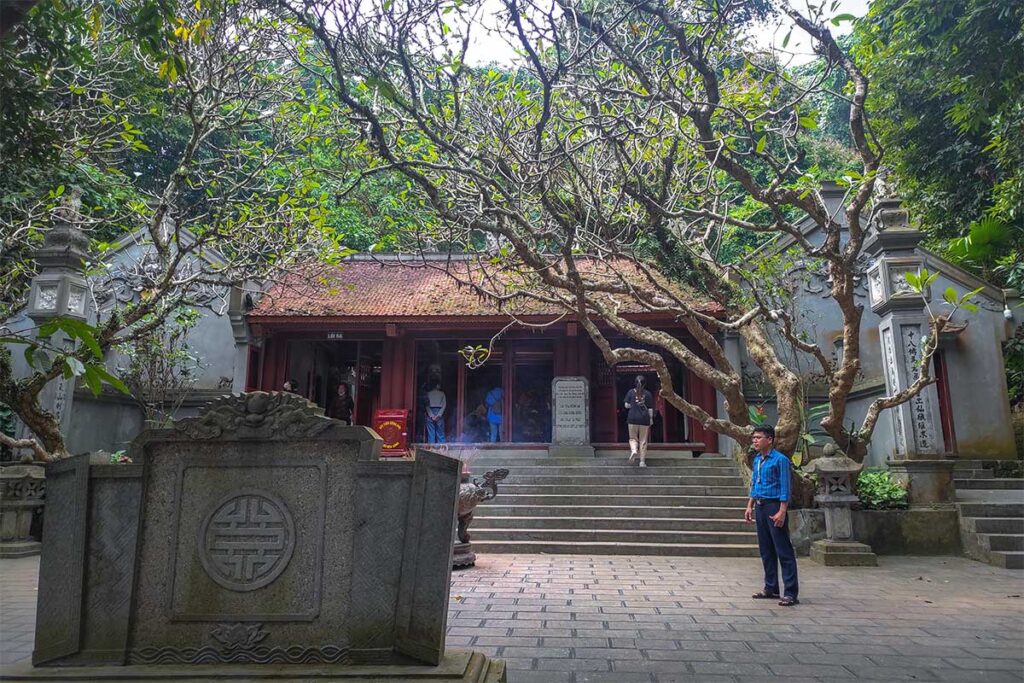
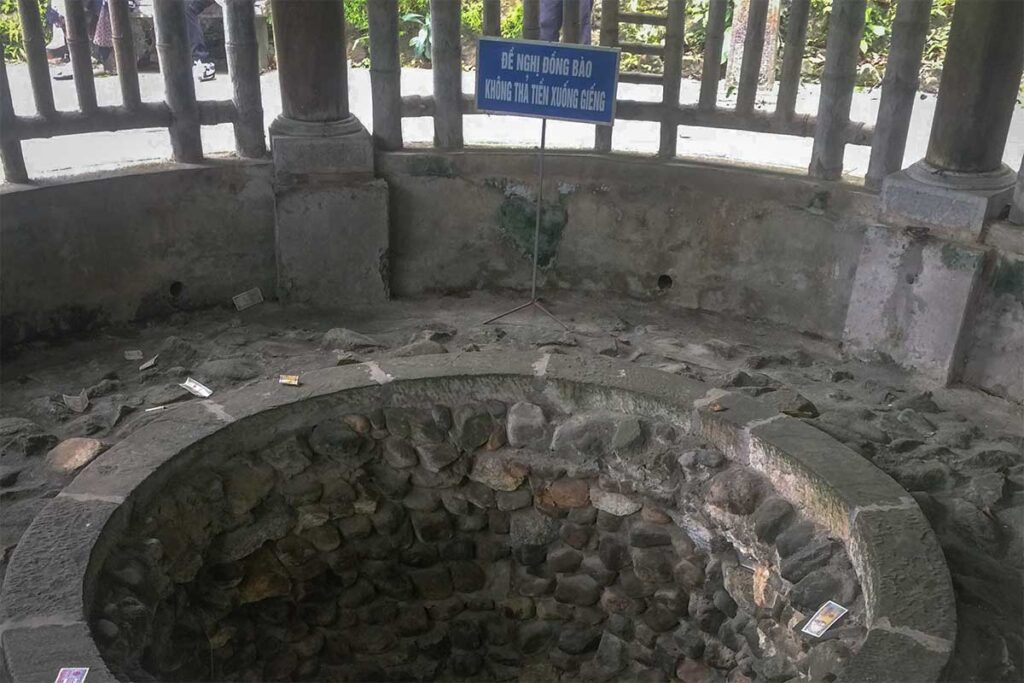
Located back at the foot of the mountain, Gieng Temple is dedicated to Princesses Tien Dung and Ngoc Hoa, daughters of the 18th Hung King. Legend says they used the nearby well to comb their hair and reflect, adding a gentle, almost personal touch to this part of the site. The temple is simpler than the others but holds cultural value through local love stories and myths.
5. Hung Kings Museum
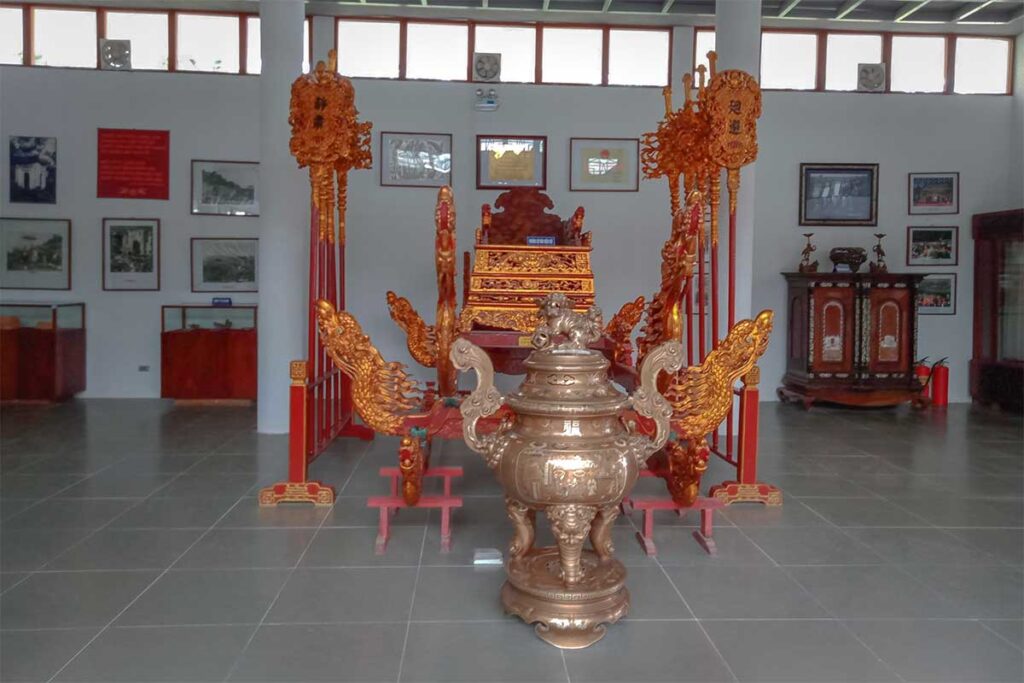
The Hung Kings Museum, located near the entrance, provides helpful context before or after your temple visit. Inside are two floors with more than 700 historical artifacts, including bronze drums, ancient tools, and models of early Vietnamese life. For foreign visitors unfamiliar with the myths and symbolism, this museum adds essential background to the spiritual sites.
6. Lac Long Quan Temple
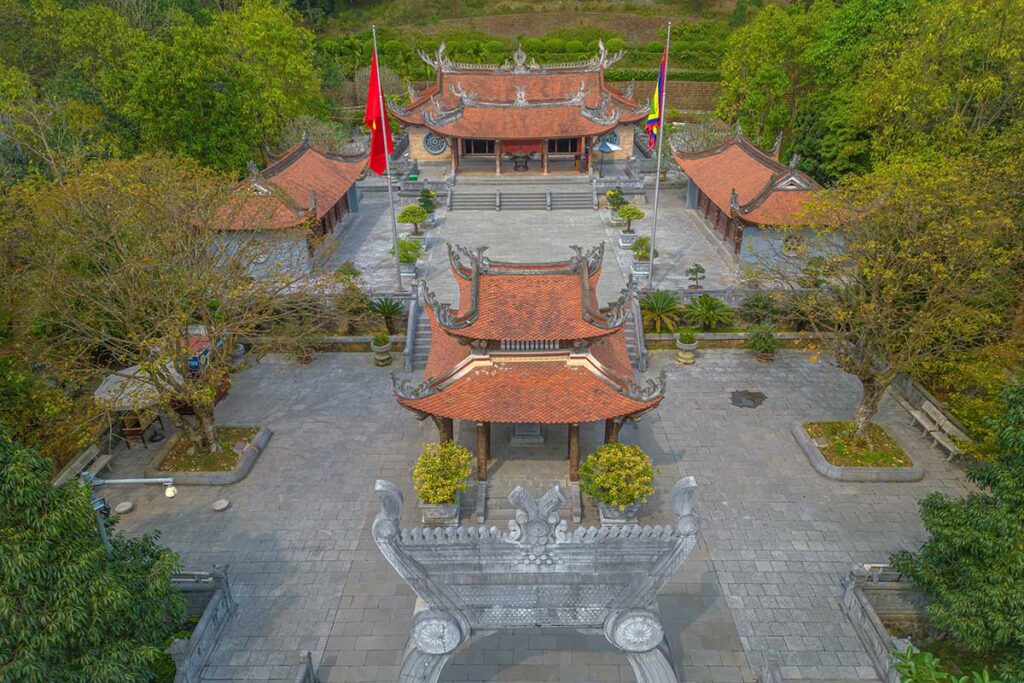
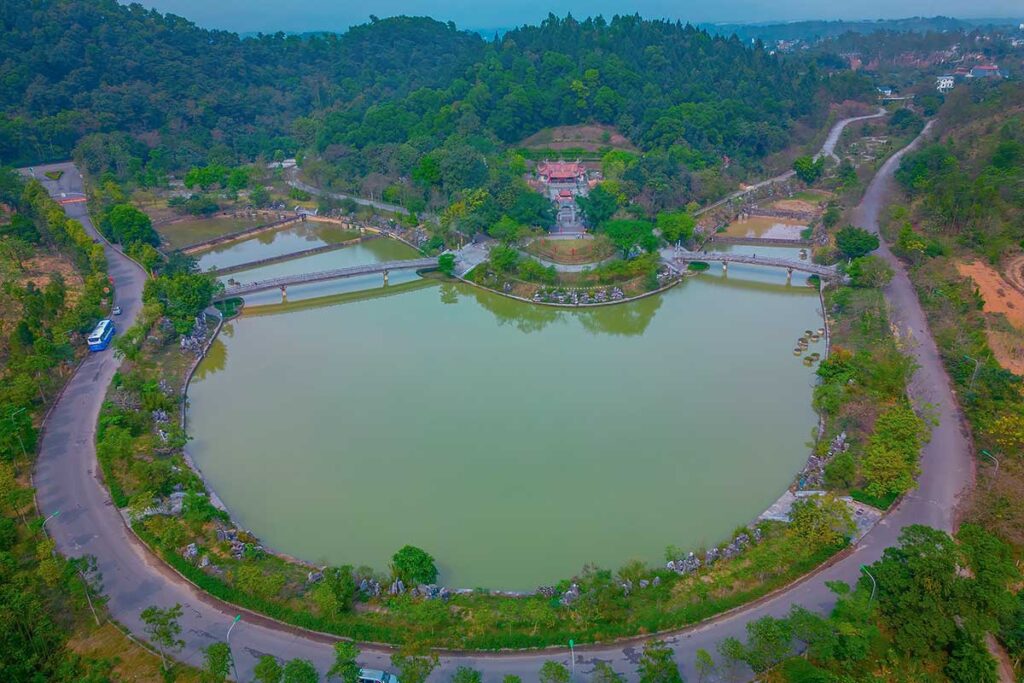
Set apart from the main path of temples on Nghia Linh Mountain, Lac Long Quan Temple sits on its own hilltop overlooking a lake. It’s dedicated to Lac Long Quan, the legendary dragon lord and father of the Vietnamese people. The location is peaceful and scenic, and the temple itself is more spacious than some of the others in the complex. There are several buildings spread out over the hillside, and the view over the water gives it a distinct atmosphere.
While not part of the main ceremonial route during the Hung Kings Festival, the site is worth a visit if you have extra time. It offers a quieter and more open space to explore, with strong symbolic importance in Vietnam’s origin story.
7. Other sites within the complex
In addition to the main temples, the complex includes other sacred spots worth noting:
- Au Co Temple, dedicated to Vietnam’s mythical parents.
- Thien Quang Pagoda, a peaceful Buddhist site.
- The tomb of the 6th Hung King, a small memorial believed to mark his final resting place.
While none of these are large or visually stunning, they round out the cultural and spiritual story behind the complex.
Hung Kings Festival
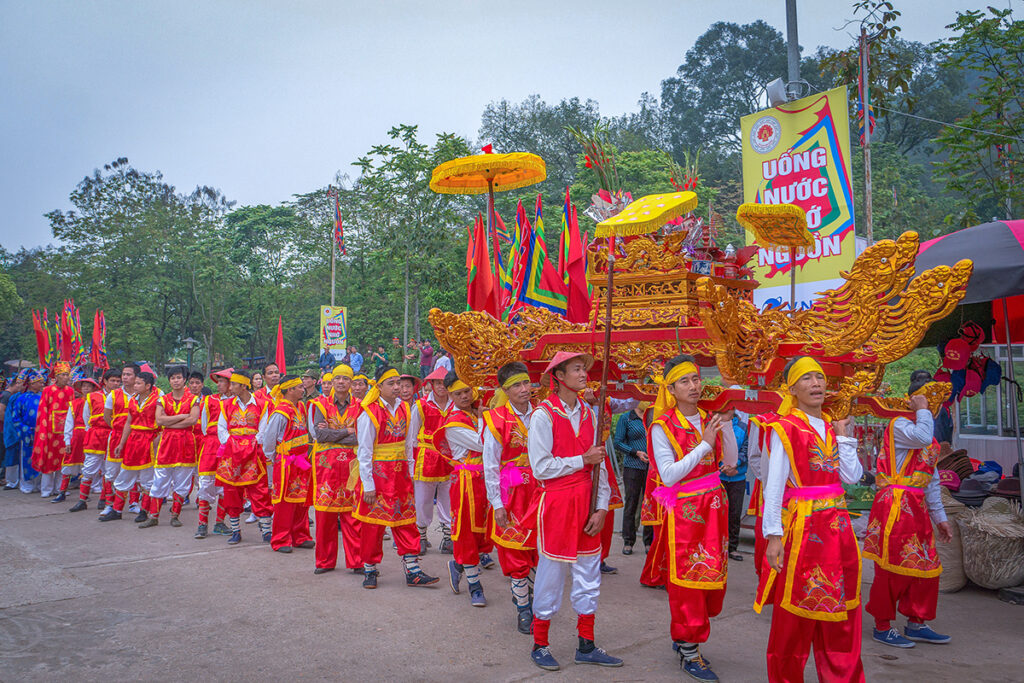
The Hung Kings Festival exists to honor the legendary founders of Vietnam and express gratitude for their role in shaping the nation’s identity. It’s one of the most important spiritual events in the country, with the main celebration taking place at the Hung Kings Temple Complex on Nghia Linh Mountain. Here, visitors can witness solemn incense offerings, ceremonial processions, traditional music and dance performances, and vibrant cultural displays.
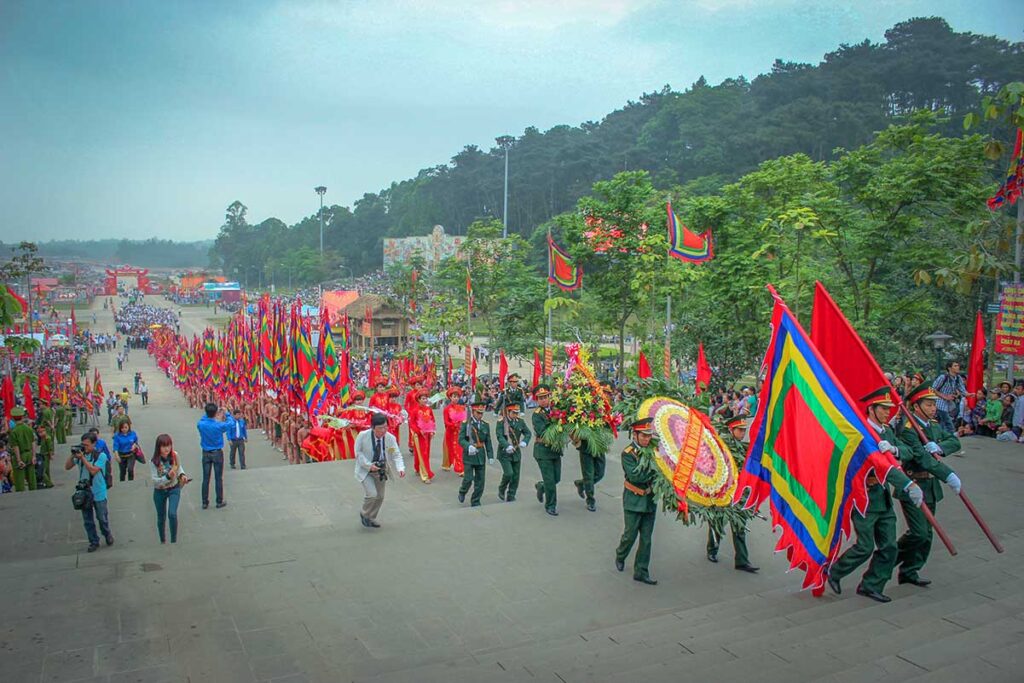
While the date is marked as a national holiday across Vietnam, it is primarily symbolic in most regions—many people simply enjoy the day off. The most meaningful celebrations happen in Phu Tho, where thousands of Vietnamese from all over the country make a pilgrimage to the temple site.
The festival takes place each year on the 10th day of the 3rd lunar month (usually in April).
For full details on events, dates, and how to attend, see our complete Hung Kings Festival guide.
How to get there
Location overview
The Hung Kings Temple Complex is located on Nghia Linh Mountain, in Co Tich hamlet, Hy Cuong commune, Viet Tri City, Phu Tho Province. It’s about 90 km northwest of Hanoi, making it a manageable day trip for those based in the capital.
By private car or taxi from Hanoi
Traveling by private car or taxi is the most convenient way to reach the site, especially if you’re short on time or prefer a comfortable, direct route. The journey takes around 2 to 2.5 hours depending on traffic. While this is the priciest option, it allows for flexible departure times and the possibility to explore other nearby sights in Phu Tho.
Arrange a private car to the Hung Kings Temple
Skip the hassle of navigating on your own—book a private car with driver for a direct ride from Hanoi to the Hung Kings Temple. Ideal for day trips, with optional stops along the way if you want to explore more.
By bus to Viet Tri + Local transport
For a more budget-friendly option, you can take a regular bus from My Dinh Bus Station in Hanoi to Viet Tri City. Buses leave frequently throughout the day and the ride takes around 2 hours. Once in Viet Tri, it’s a short 10 km ride by taxi or motorbike taxi to reach the temple complex. This option works well if you’re planning to stay overnight and visit more of the area.
Entrance Fee & Opening Times
Opening hours
The Hung Kings Temple Complex is open daily from around 7:00 AM to 5:00 PM. It’s best to visit in the morning to avoid the midday heat and crowds, especially if you plan to walk up the entire route.
Ticket prices
- Temple Complex Entry: Free of charge
- Hung Kings Museum: Around 15,000 VND per person
- Electric Cart: Between 10,000 and 50,000 VND depending on the route and distance
Electric Cart Info
Electric carts are available near the entrance and can take visitors partway up the mountain, bypassing the initial set of stairs. This is especially useful for those with limited mobility or anyone wanting to save energy for the upper temple sections. You’ll still need to climb to reach the middle and upper temples, but the cart can make the overall visit less strenuous.
Tips for visiting Hung Kings Temple Complex
Be prepared for lots of steps
The complex is built into a hillside, and reaching the upper temple requires climbing hundreds of stone steps. Wear comfortable walking shoes and take your time—especially if you’re not used to steep climbs.
Dress modestly
Although there’s no strict dress code, this is a religious site, so it’s best to cover your shoulders and knees out of respect. Lightweight, breathable clothing is recommended if visiting in warmer months.
Bring cash for food and cart
While entrance is free, cash is needed if you want to use the electric cart or buy drinks and snacks from local vendors. There are a few stalls near the entrance and along the walking route.
Avoid crowds
The site can get crowded, especially during weekends and around the Hung Kings Festival in the third lunar month. For a quieter visit, aim to arrive early in the morning and avoid national holidays.
Is it worth visiting?
That depends on what kind of traveler you are. The Hung Kings Temple Complex is culturally and historically important, especially for Vietnamese people who see it as a spiritual link to the country’s origins. But for international visitors, the site can feel underwhelming—the temples are relatively modest, and the experience isn’t better from other temple sites you might already visit in Hanoi, Hue, or Ninh Binh.
If you’re a history enthusiast, interested in Vietnam’s legendary beginnings and ancient mythology, the visit can be meaningful—especially with a stop at the museum. But if you’re short on time or prefer visually impressive landmarks, you might want to skip it.
To get the most out of the trip, it’s best to combine it with other nearby sights, which we cover in the next section.
Combine with other sights in Phu Tho
If you decide to visit the Hung Kings Temple Complex, consider making the trip more rewarding by exploring nearby attractions in Phu Tho:
- Xuan Son National Park – A hidden gem with hiking trails, cave systems, and mountain views. Ideal for combining nature with culture.
- Long Coc Tea Hills – Rolling tea plantations offering scenic strolls and the chance to learn about local tea production.
- Mother Au Co Temple – A smaller site nearby, dedicated to the mythical mother of Vietnamese people.
- Viet Tri City Markets – Great for tasting local food like palm fruit, cassava pancake (bánh san), and multi-spurred chicken—or picking up souvenirs such as sour meat and five-colored sticky rice.
For a full list of things to do, including practical details and transport tips, check out our complete Things to do in Phu Tho guide.
